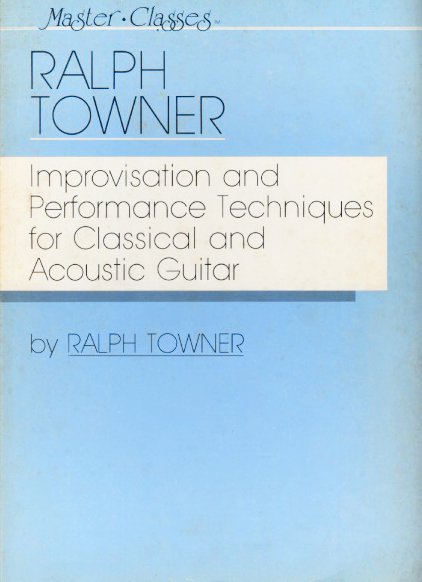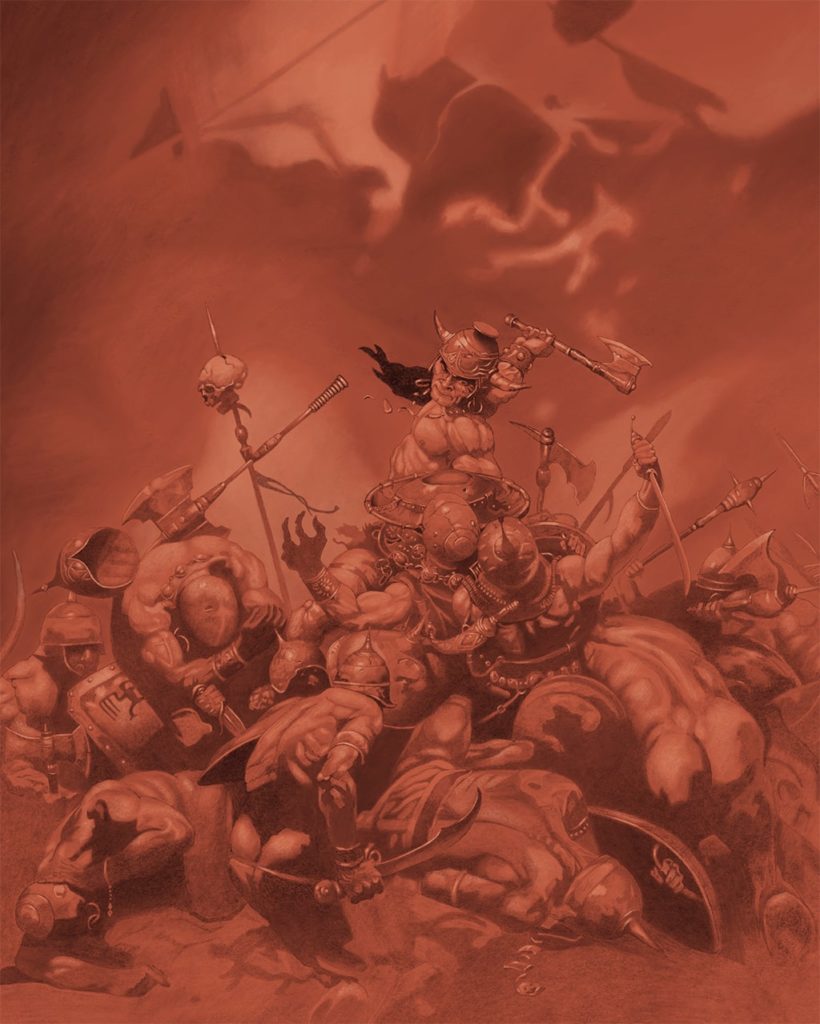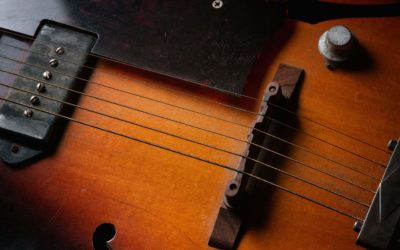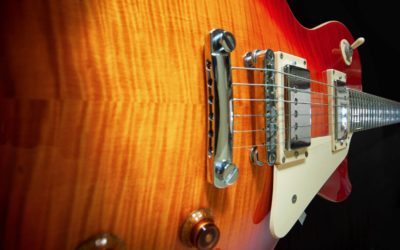Table of Contents
Book Review: Ralph Towner – Improvisation and Performing Techniques for Classical and Acoustic Guitar
Ralph Towner’s combination of Classical and Jazz has separated him from most of his contemporaries. He is a master of composition and improvisation for both nylon and 12 string guitars. This book offers a glimpse into his unique vision.
Background
As the interest in guitar grew out of the 60’s/70’s, there was an influx of publishers who were putting out instruction books to cater to the increasing demand. During the 1980’s, the amount of material, as well as the depth of the instruction, brought about many classic instructional tomes. One of the more interesting publishers was, “21st Century Music Productions”, which seemed to focus on more advanced material.
Although I don’t remember all of their offerings, I did wind up purchasing Allan Holdsworth’s “Reaching for the Uncommon Chord” and the subject of this review, Ralph Towner’s “Improvisation and Performing Techniques for Classical and Acoustic Guitar”. The Towner book was particularly intriguing, as nylon string guitar was not something that was “hot” at the moment and Towner was relatively unknown in our area.

Ralph Towner: Improvisation & Performing Techniques for Classical and Acoustic Guitar
The 82 page book is part of the “Master Classes” TM series of books by “21st Century Music Productions” and it features a simple cover design. There are two black and white photos of Towner in the book, one takes up a full page, while the rest of the book is text and notation – there is no tab. Although there are several examples of Towner’s compositions, the bulk of the book is devoted to his approach and techniques.
Damping Techniques
The book interestingly starts out with the introduction of Towner’s approach to the Damping Technique. Using Prepared Arpeggio Exercises, Towner introduces the student to the concept of lightly resting your right hand fingers on the strings (preparing) and then individually playing each of the notes of the arpeggio and then Damping the strings again to start the next series of strokes. This is similar to the damper pedal on the piano.
It is is an important technique to have in your repertoire, even though I”m more of a fan of the sustain pedal on a piano and prefer to have my chord voices sustain, I still will use this technique to make staccato passages really sound abrupt and clean.
One of the highlights of this chapter, and for that matter, the rest of the book, is the use of “colorful” chords. Unlike classical books (ex. 120 Right Hand Studies for Guitar – Mauro Giuliani) that use “standard” chords, Towner introduces the student to a wide range of jazz influenced chords which sound far more interesting.
Polymetrical Rhythmic Groupings
This section continues the prepared fingers technique introduced above, while introducing the concept of how the rhythmic grouping of the arpeggios will not always “fit” the time signature, per say, but will have a different rhythmic grouping, thus giving the illusion of two rhythms happening at once.
Once again Towner uses several jazz influenced voicings to make the material sound interesting. His use of open strings adds a “airy” quality to the chords and gives the player some new voicings to add to their repertoire.
Several pages are used to show different rhythm variations.
Simultaneous Finger Combinations
The emphasis on this section is the playing of more than one note on a beat. It is short, but leads into the next section…
Chordal Plucking
This section primarily deals with playing a steady 16th note with your thumb, while playing chords on/off various beats. There are also exercises with the usage of syncopation. Of particular interest is the playing of the chords both sustaining and with the use of the previous damping technique.
Melodic Playing
In this short section, players are introduced to the free and rest strokes and how to manipulate the notes for various sounds and effects.
Further Two Chord Combinations
Although this is just a single page of chord combinations, there are a lot of interesting groupings to play through. Many of these voicings will prove to be useful for personal compositions, Ralph Towner compositions, as well as general chord knowledge.
Solo Guitar Playing
While all of the previous sections provide essential elements of Towner’s playing, this is the section where we get a glimpse into the improvisational aspects of his compositions, and what it takes to be a “solo guitarist”.
He starts off with a two chord progression and then shows a scale/fingering to be used to improvise against it. Like most of the examples in the book, this is done over a grid of 16th notes. This is an interesting approach, as the emphasis of many jazz books is eight notes. Both approaches have their plusses, however, I like the use of 16th note here as it teaches the player to subdivide the rhythm an extra degree.
Exercise 3 is an important one. It is preceded by a diagram showing the various aspects of Bass, Accompaniment and Melody in a visual form. Then a very important page of the conceptual approach to the notated ex.3, followed by the exercise itself along with performance markings.
Innocenti
Having explained the previous notated improvisational approach, Towner now moves onto an actual song, in this case, “Innocenti” by Ralph Towner and Gary Burton. This is written with the melody in the top line and the chords on a second line. The piece is first played as written and then repeated for solos.
Vessel
Another Towner/Burton song is introduced, this time using a different approach to improvising. It also features a few exercises to supplement the material.
Serenade
This Ralph Towner piece is to be played as either a solo piece or with a melodic instrument. It contains the song itself, along with the solo chord changes, scales and additional chord voicings for higher positions.
Distant Hills
Another Towner piece, but this time for a duo. Like the previous pieces, this includes the corresponding chord/scale usage written out.
Left Hand, Right Hand and Arpeggio Studies
The next sections of the book deal with various Left Hand, Right Hand, Vibrato and Arpeggio Studies. It contains several useful exercises, including isolated finger exercises, pianistic arpeggio exercises and using P-I as a team.
Harmony Scales and Chord Voicings
This is a concise overview on the subject matter and is probably best for beginners, as more advanced students will probably find nothing of profoundness, or perhaps fill in some gaps of knowledge at best.
Beneath an Evening Sky and Along the Way
The book concludes with two final pieces, “Beneath an Evening Sky” and “Along the Way”. “Beneath an Evening Sky” is to be performed as a duet, with the melody part written above the guitar part. “Along the Way” can be played either as a duet or a solo piece. Both pieces are written/analyzed/taught in the same manner as the previous pieces.
Summary
I can still remember seeing this on display at the Focus II music store the mid-1980’s and was fascinated by the concept. After all, there were many books on improvising, but those were based on Jazz and Standards. It was eyeopening to see a book devoted to solo guitar playing with an emphasis on improvising. Although I was unaware of Towner at that point, I felt the need to buy the book, as the material and layout intrigued me. Needless to say, that was a good decision.
Anyone interested in solo guitar playing, and especially, improvising in that setting, would do well to hunt down a copy of this book. Towner was originally a piano player influenced by Bill Evans, and that influence, combined with studying Classical guitar lead to his sound and the material in the book.
There is a decidedly Classical angle to the techniques presented, however, the harmonies are more jazz oriented, but not in the manner of cliche chords often used in “Standards”. Many of the chords feature open strings which add interest/color to the voicings and are well worth considering adding to your “chord library”.
The techniques presented are geared more to the intermediate/advanced player. Though a serious “beginner/intermediate” could learn a lot from the material. The book is more suitable for self-study than as a tool for teaching, as there are more specialized books devoted to each of the topics discussed here. Nevertheless, if a student specifically wanted to learn Towner’s approach, then this would be an excellent point of reference to work from.
While the techniques can be found in other literature, it is the approach of improvising on the pieces that can be considered the main takeaway from the book. Towner presents the a chord/scale relationship for each measure of the songs. Having each of the scales written out for each of the chords instead of having to have already memorized the pertinent chord/scale relationships. This approach allows the player to focus on what is currently important and add to their knowledge as they move along.
Unlike many 40 year old books, the material is more relevant today, than it was in the 80’s. Nowadays, fingerstyle guitar has blossomed into a robust genre and improvising is more common in that format. The book not only stood the test of time, but was actually ahead of its time.
Needless to say that if you are interested in this type of playing, then this is a book that you will most certainly want to take a look at. If you are a Classical player you will find the sections on improvising to be liberating, if you are a Jazz improviser, then you will find the Classical techniques a welcome addition to your technical arsenal.
Of course if you are neither a Jazz or Classical guitarist, and you have an interest in learning both, then this would be a good introduction to the concepts and techniques used.
I would recommend this book for the serious player looking to expand their horizons.
Final Words
As always, I’d like to take a moment to thank everyone who has purchased my book! I appreciate your interest and support and I look forward to hearing what you do with the material!
I’ve again enclosed a recent master study drawing that I did of Frank Frazetta’s “Conan the Destroyer” painting, using Procreate on an iPad Pro, using an Apple Pencil 2. This is my favorite Frazetta piece and it took quite awhile to do, which is why I hadn’t posted a post in a bit…






A Perfect Collection of Techniques-Performance & Creative Styling….
Ralph Towner is indeed a Master!
How can I buy “Book Review: Ralph Towner – Improvisation…
by Serge PierroApr 29, 2022”?
Best regards.
Medeo
Your best bet is to try eBay, as the book has been out of print for a while.